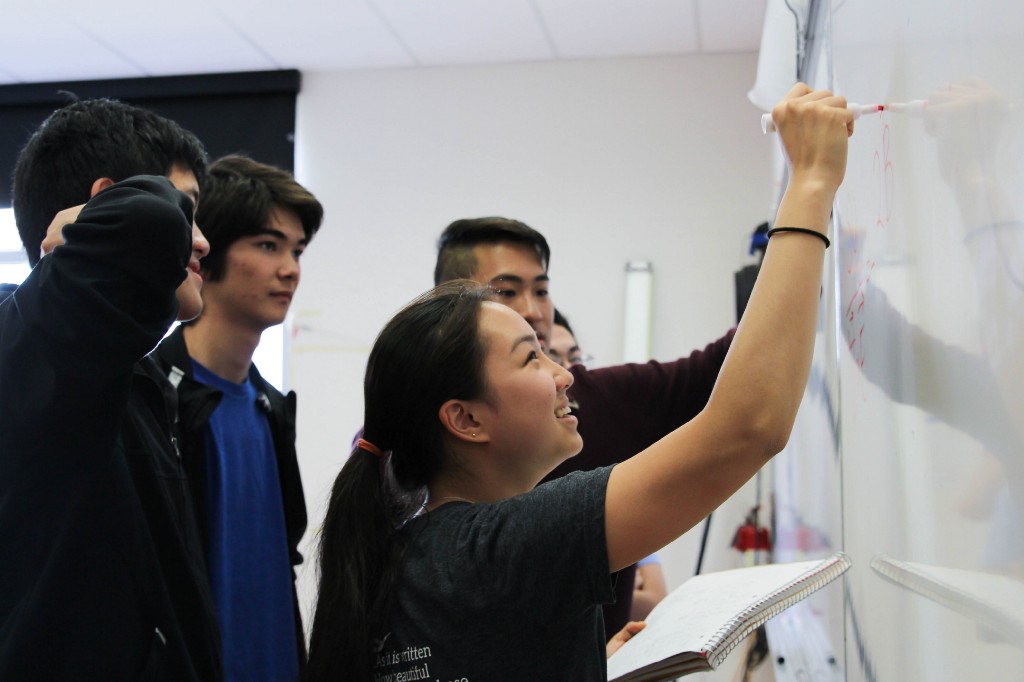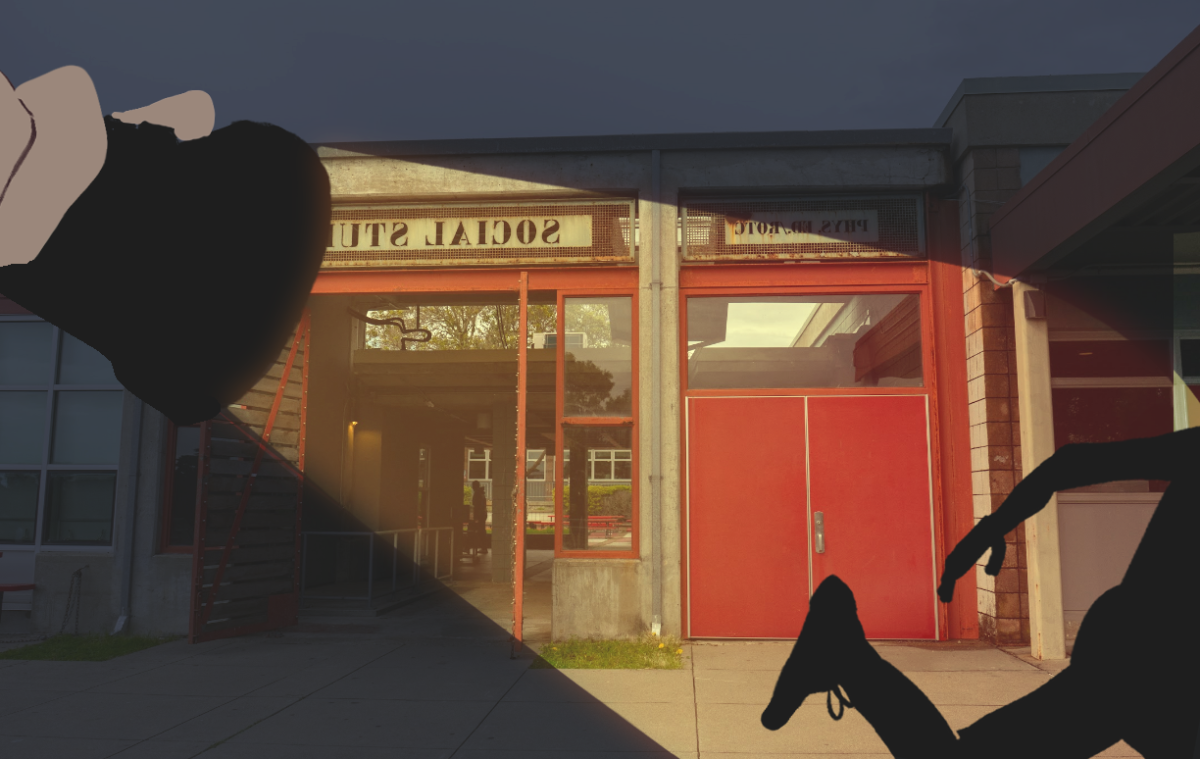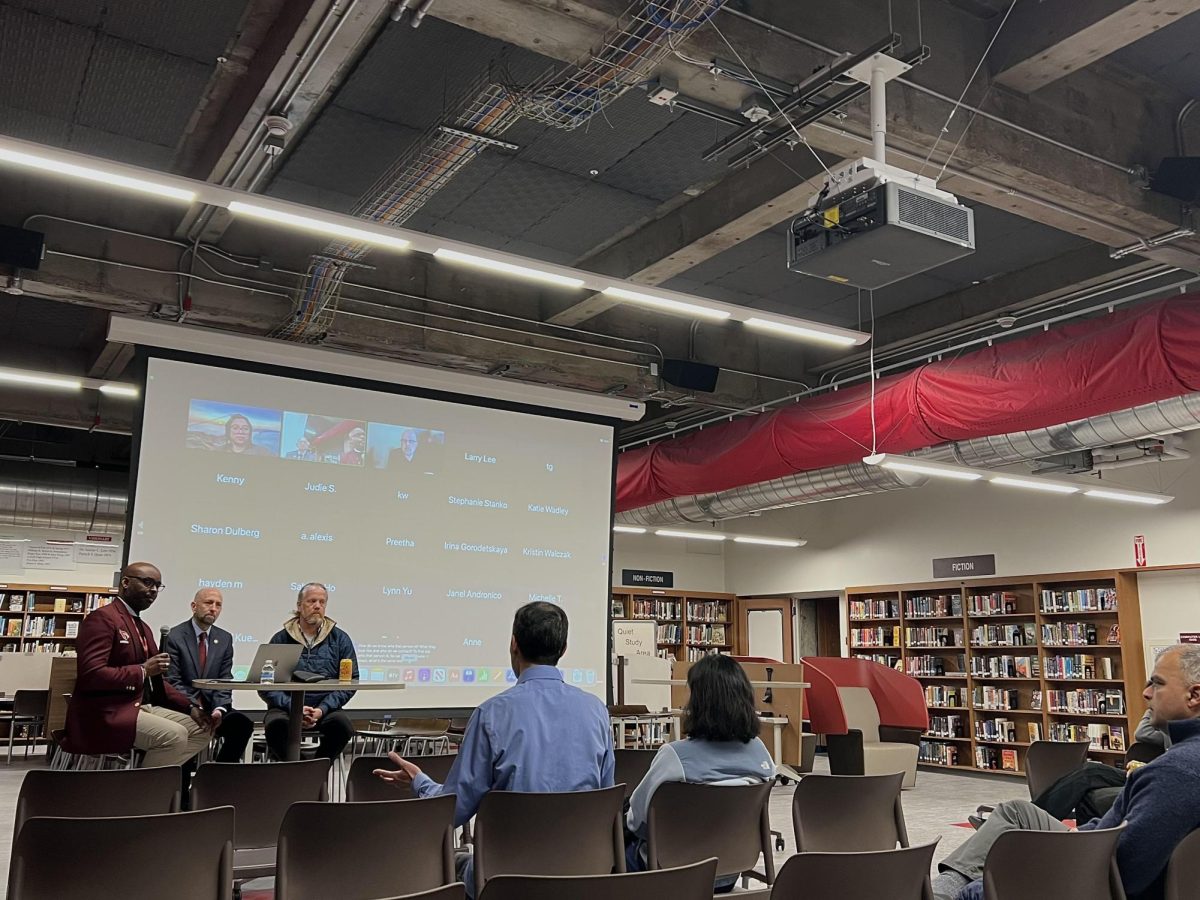
“Good morning, Mr. Shapiro!” Every morning, this loud student greeting erupts from AP Physics C teacher Richard Shapiro’s classroom. This may sound like a regular class, but anyone walking in would notice one thing immediately — the apparent lack of female students.
The percentage of female students taking AP Physics C plunged from 45 percent to 23.6 percent this year. Although there has always been more male than female students in this class, the gender gap has widened compared to previous years. This gender gap in AP Physics C is an enduring issue at Lowell.
AP Physics C: Mechanics and AP Physics C: Electricity and Magnetism are college-level, calculus-based physics courses. The majority of high schools in the United States only offer AP Physics C: Mechanics as a two-semester course to students, according to the College Board. At Lowell, AP Physics C: Mechanics and AP Physics C: Electricity and Magnetism are offered as a combined yearlong course, with Mechanics taught in the first semester and Electricity and Magnetism in the second.
“There are so many smart girls at Lowell, there is no reason why they shouldn’t take this class if they are interested in it.”
The majority of Lowell students are girls, comprising about 58 percent of the entire student body. Because of this, sometimes the lower-level physics classes have more girls than boys. For example, the percentage of female students taking a regular physics class is 65 percent. However, the percentage of female students does not hold in AP Physics C, according to Shapiro, who has witnessed this trend since he started teaching physics at Lowell about 30 years ago.
This year, there are only 17 female students out of the 72 students taking AP Physics C. In one of the two AP Physics C sections, there are only six girls. Surprisingly, this is not the lowest female to male ratio in Lowell’s history.
When it was first taught in 1992, there were exactly five girls in the AP Physics C class, said Shapiro. Ever since then, Shapiro has aimed to encourage more girls to sign up for this class. Shapiro has made continuous efforts to close the gender gap. In recent years, the female to male ratio in physics C had increased, rising up to 45 percent in 2016. But the ratio slumped this year.
One reason the ratio may have slumped is that many female Lowell students may not fully understand the difficulty level of this class before dismissing it for consideration from their class schedules.
Senior Ying Chen, who is currently taking AP Calculus BC, opted to take AP Physics 1 instead of AP Physics C. “I don’t want to start too high, because I am not sure if I’ll be able to do it,” Chen said. Another senior, Monica Tse, who is also taking AP Physics 1 shares the same sentiment. “I did not have any knowledge and background in physics, so I felt I shouldn’t take a harder course,” Tse said.
What many students may not know is that AP Physics C, which is based on calculus, actually may be easier than the algebra-based physics class for students taking AP Calculus BC. “I feel this class is very easy if you listen to the teacher. This class is not like AP Physics 1 or 2,” said senior Jasmine Zeng, who is taking Physics C. “In physics C, it gives you the reason behind the concept.”
At Lowell, 17 out of 72 AP Physics C students are girls.
Many of the female seniors in AP Physics C said they would like to encourage more girls to take the class. “There are so many smart girls at Lowell, there is no reason why they shouldn’t take this class if they are interested in it,” said senior Natalie Bunimovitz. Senior Sakuntala Jagabattuni added, “I don’t want to push girls just because there is a gender gap, I want to push them to get an interest in this thing.”
Senior Karen Wang explained why girls need to break the biased loop by trying STEM classes. “It is like a loop, people generally think that girls are not good at math, so then girls are discouraged from taking STEM classes,” Wang said. She believes people should not be biased against one gender in the STEM field.
All of these female students who were interviewed plan to study a STEM-related field in college and they believe this class will help them whether they major in physics or not. Wang believes physics will help her major in computer science in college, because “when you are making a program or a game, sometimes you need to use the knowledge that you get from physics,” she said. But there are also some challenges to the course as one would expect from a college-level course. “We are using a college freshman textbook, which makes me struggle a little bit on the material,” Bunimovitz said. Overall, all of these female students say they have fun in this class because there are a lot of interesting topics and experiments.

There are great advantages to taking AP Physics C in high school, said Shapiro. First of all, this college-level class provides students with an advantage in college admission. Through this class, students develop their college-level academic skills and impress college admission officers by showing the ability to handle a college class. The class also prepares students interested in future math-related STEM majors, according to Zeng. “It opens your mind of the world. We only learn calculus in math class, but physics helps you to apply math,” she said.
The benefits are applied to both genders. Lowell students are doing an excellent job in the AP Physics C exam each year. According to Shapiro, the percentage of Lowell students scoring a 4 or 5 on the AP exam is more than 90 percent every year.
If high school students take the calculus-based physics class, which is required in college general curriculum for science majors, they may have an advantage over their peers in college. If students pass the AP exam in high school, they do not need to take it again in most colleges and they can graduate earlier and save tuition. “I firmly believe that calculus-based physics is the gateway course for all the sciences.” Shapiro said. “If you have not taken this class, you just have to take two to four semesters in college as a minimum requirement.”
“I don’t want to push girls just because there is a gender gap, I want to push them to get an interest in this thing.”
The gender gap in this calculus-based physics course is not only a problem at Lowell — it is a nationwide phenomenon. In 2017, only 28.3 percent of the AP Physics C Mechanics exam takers and 24.3 percent of Electricity and Magnetism test takers in 2017 were female, according to the College Board.
To encourage girls to sign up for the class, Shapiro had his female AP Physics C students visit precalculus classes and AP Physics 1 classes to speak with girls who might be interested in taking AP Physics C. “I did not tell them what to say,” Shapiro said. “I would say, ‘Look, do you believe more girls should take this? You go tell them why they should take this. Just say what you feel, what you believe. If you don’t think so, just don’t go.’”
In addition, Shapiro holds a yearly event where female college students who took AP Physics C at Lowell come back to Lowell during spring break. These college students hold an all-female, no-male-allowed event in the current AP Physics C classroom where female students are provided a completely private space to talk about their experiences as women in STEM. And this event has already successfully been held in 2014, 2015, 2016 and will take place again this school year.
In order to get more female students in AP Physics C classes in the future, Shapiro has decided that students who did not take any previous physics class but are taking AP Calculus BC can enroll in this class. Students that have taken a physics class but are not currently enrolled in any calculus class may also enroll in the class.












